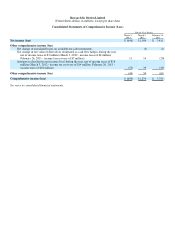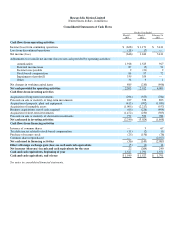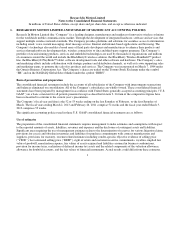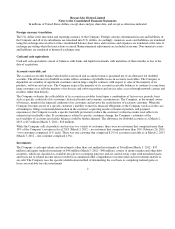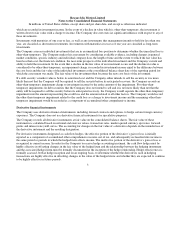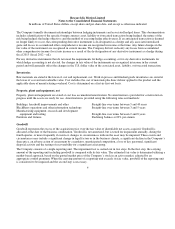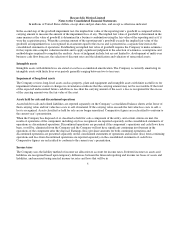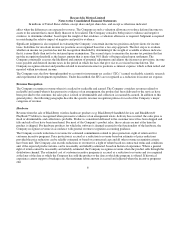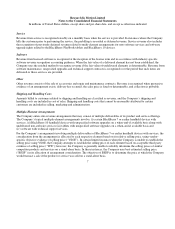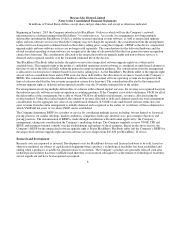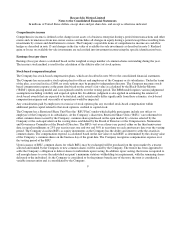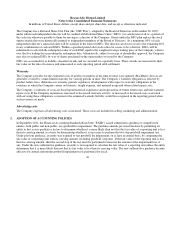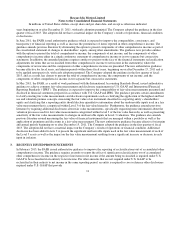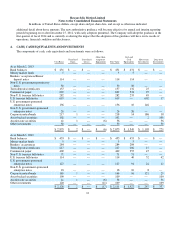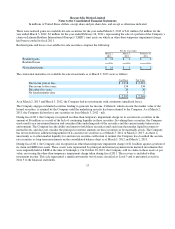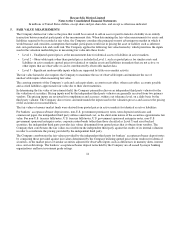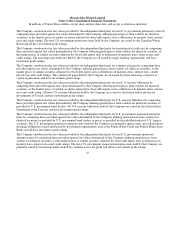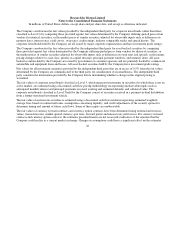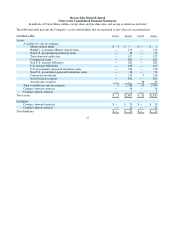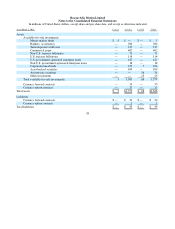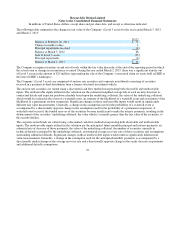Blackberry 2013 Annual Report Download - page 125
Download and view the complete annual report
Please find page 125 of the 2013 Blackberry annual report below. You can navigate through the pages in the report by either clicking on the pages listed below, or by using the keyword search tool below to find specific information within the annual report.
Research In Motion Limited
Notes to the Consolidated Financial Statements
In millions of United States dollars, except share and per share data, and except as otherwise indicated
Comprehensive income
Comprehensive income is defined as the change in net assets of a business enterprise during a period from transactions and other
events and circumstances from non-owner sources and includes all changes in equity during a period except those resulting from
investments by owners and distributions to owners. The Company’s reportable items of comprehensive income are cash flow
hedges as described in note 15 and changes in the fair value of available-for-sale investments as described in note 5. Realized
gains or losses on available-for-sale investments are reclassified into investment income using the specific identification basis.
Earnings (loss) per share
Earnings (loss) per share is calculated based on the weighted average number of common shares outstanding during the year.
The treasury stock method is used for the calculation of the dilutive effect of stock options.
Stock-based compensation plans
The Company has stock-based compensation plans, which are described in note 9(b) to the consolidated financial statements.
The Company has an incentive stock option plan for officers and employees of the Company or its subsidiaries. Under the terms
of the plan, as revised in fiscal 2008, no stock options may be granted to independent directors. The Company measures stock-
based compensation expense at the grant date based on the award’s fair value as calculated by the Black-Scholes-Merton
(“BSM”) option-pricing model and is recognized rateably over the vesting period. The BSM model requires various judgmental
assumptions including volatility and expected option life. In addition, judgment is also applied in estimating the amount of
stock-based awards that are expected to be forfeited, and if actual results differ significantly from these estimates, stock-based
compensation expense and our results of operations would be impacted.
Any consideration paid by employees on exercise of stock options plus any recorded stock-based compensation within
additional paid-in capital related to that stock option is credited to capital stock.
The Company has a Restricted Share Unit Plan (the “RSU Plan”) under which eligible participants include any officer or
employee of the Company or its subsidiaries. At the Company’s discretion, Restricted Share Units (“RSUs”) are redeemed for
either common shares issued by the Company, common shares purchased on the open market by a trustee selected by the
Company or the cash equivalent on the vesting dates established by the Board of Directors or the Compensation, Nomination
and Governance Committee of the Board of Directors. The RSUs vest over a three-year period, either on the third anniversary
date, in equal installments or 25% per year in years one and two and 50% in year three on each anniversary date over the vesting
period. The Company classifies RSUs as equity instruments as the Company has the ability and intent to settle the awards in
common shares. The compensation expense is calculated based on the fair value of each RSU as determined by the closing value
of the Company’s common shares on the business day of the grant date. The Company recognizes compensation expense over
the vesting period of the RSU.
Upon issuance of RSU, common shares for which RSUs may be exchanged will be purchased on the open market by a trustee
selected and funded by the Company or new common shares will be issued by the Company. The trustee has been appointed to
settle the Company’s obligation to deliver shares to individuals upon vesting. In addition, upon vesting, the trustee is required to
sell enough shares to cover the individual recipient’s minimum statutory withholding tax requirement, with the remaining shares
delivered to the individual. As the Company is considered to be the primary beneficiary of the trust, the trust is considered a
variable interest entity and is consolidated by the Company.
9


